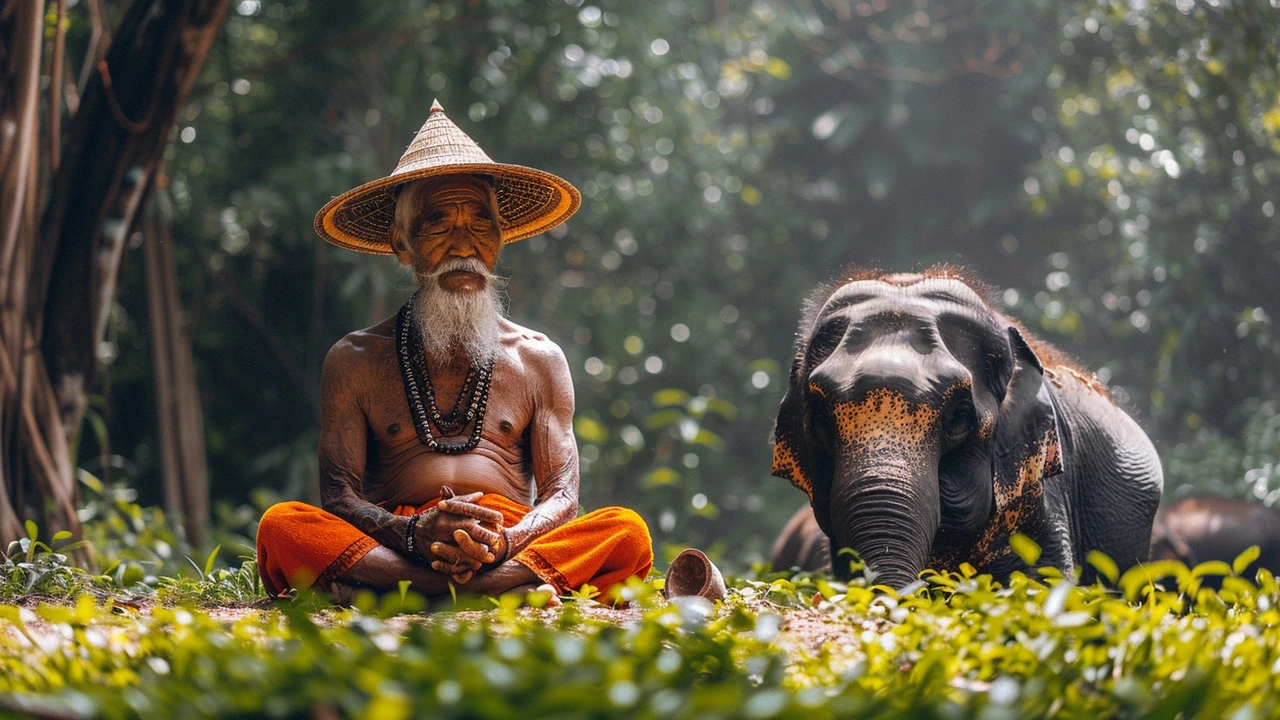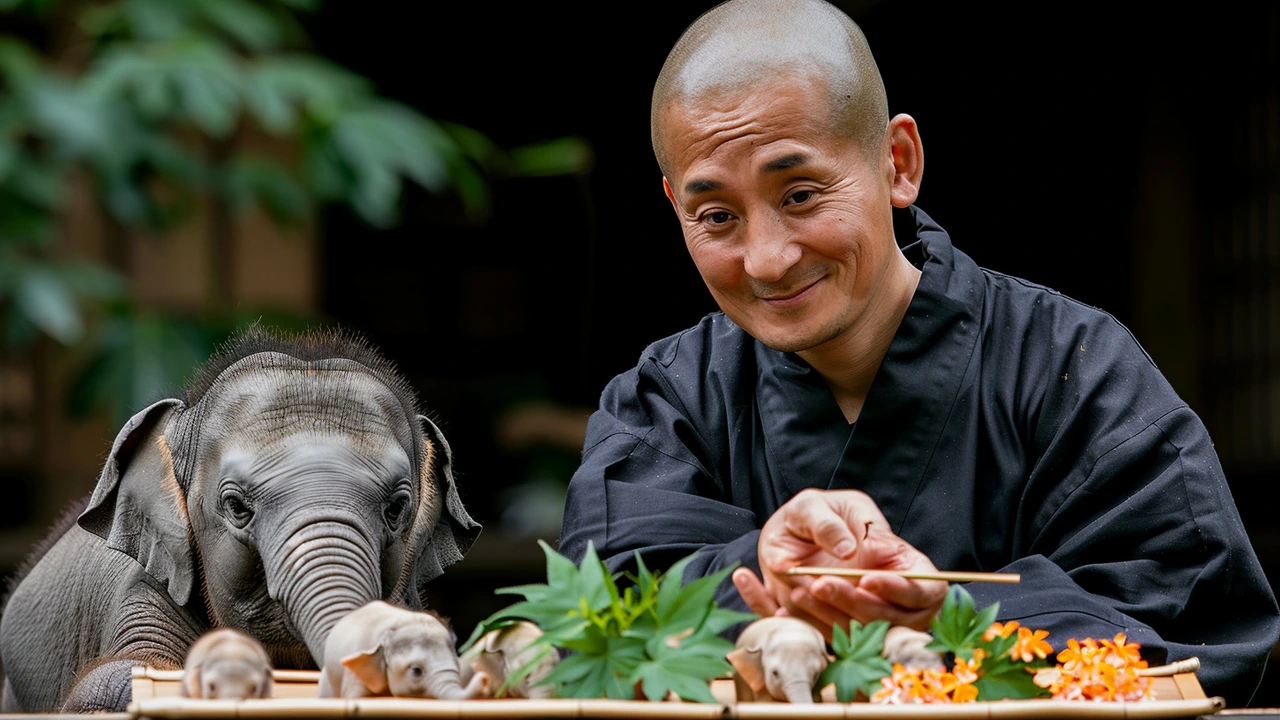Elephant massage might sound unusual to some, but it has been an essential practice in regions where elephants play a crucial role in culture and labor. For centuries, handlers have used massage to ensure the well-being of these magnificent creatures.
The process involves carefully applying pressure to specific areas of the elephant's body, similar to how human massages work. This method helps in relieving stress, improving circulation, and addressing various health issues that elephants might face.
The unique relationship between humans and elephants is also enhanced through this practice. It requires trust and cooperation, leading to a stronger bond and mutual respect. This connection is not only beneficial for the physical health of the elephants but also their emotional well-being.
As we delve into the history, methods, benefits, and the extraordinary bond between humans and elephants, you'll find that elephant massage is more than just a wellness practice – it's a testament to the deep connection we can share with these gentle giants.
Elephant massage, a practice that may seem novel to many, has deep historical roots, tracing back thousands of years. In regions such as India and Thailand, where elephants have been revered and utilized in both cultural and labor capacities, the art of massage was developed as a way to maintain the health and vitality of these majestic creatures.
Historically, elephants were used in ceremonial roles, heavy labor tasks, and as war animals. Their wellbeing was crucial, and caretakers, known as mahouts, employed various techniques to ensure elephants remained in the best possible condition. Massage was a key part of their care routine. The practice involved methods derived from Ayurvedic traditions in India, which emphasized the benefits of touch therapy for both physical and mental health.
In Thailand, the tradition of elephant massage has been passed down through generations. Mahouts developed unique techniques to cater to the specific physiological needs of elephants. These methods were often guarded secrets, shared within families to maintain a high standard of care. A typical session could last anywhere from a few minutes to several hours, focusing on critical areas such as the spine, legs, and trunk.
According to a longtime mahout in Chiang Mai, “Massage helps our elephants relax after a long day. It’s also a way to build trust and communicate with them. An elephant can feel your intentions through your hands.”
Research into the historical accounts of elephant massage shows that it was often linked to important rituals and festivals. Elephants participated in elaborate ceremonies and parades, where they were adorned and celebrated. Keeping them in optimal health was not just for practical purposes but also a matter of cultural pride and respect.
As time progressed, the techniques evolved, blending traditional knowledge with modern veterinary practices. Today, elephant massage is recognized not only in its regions of origin but also globally, as a significant aspect of animal wellness. The historical roots of this practice highlight a profound connection between humans and elephants, one built on mutual care, respect, and understanding.
With the growing awareness of animal welfare, these historical practices are being reexamined and appreciated in contemporary contexts. The techniques used for elephant massage over the centuries demonstrate a sophisticated understanding of animal physiology and the importance of holistic care. This ancient art continues to thrive, bridging the gaps between past traditions and future advancements in animal care.

When it comes to **elephant massage**, the techniques and methods employed are both traditional and precise. These methods are designed not only to relieve physical discomfort but also to foster a deep emotional connection between the elephants and their handlers. The techniques vary depending on the specific needs of the elephant, which can range from muscle tension to joint pain.
Traditional elephant massage has its roots in ancient practices, primarily in regions like India and Thailand. These areas have a long history of working with elephants, especially in forestry and cultural ceremonies. Traditionally, elephant handlers, known as mahouts, use their hands and sometimes tools to apply pressure to the elephant’s body, focusing on areas where tension tends to build up, such as the back, legs, and trunks.
One commonly used technique is kneading. This method involves the handler using their hands or feet to knead the muscles of the elephant, much like kneading dough. This helps in relaxing the large muscle groups and improving blood circulation. Another popular method is percussion, where the handler taps rhythmically on the elephant's body, stimulating nerve endings and promoting relaxation.
In modern times, the traditional methods have been complemented with more advanced techniques. These include the use of essential oils and aromatherapy to enhance the relaxation process. The oils are often massaged into the skin, providing not only relief from physical ailments but also aiding in calming the elephant's mind.
Interestingly, some modern zoos and wildlife reserves have integrated physiotherapy and chiropractic adjustments into their elephant care routines. These methods often require specialized training, ensuring that the handlers can provide the best possible care for the elephants. The combination of these traditional and modern practices creates a comprehensive approach to elephant wellness.
"Elephant massage is not only beneficial for the physical health of these majestic creatures but also crucial for their mental well-being,” says Dr. Anika Patel, a renowned veterinarian specializing in elephant care.
The process of massaging an elephant is both time-consuming and intricate. It requires a deep understanding of the elephant's anatomy and behavioral cues. Handlers must be skilled in identifying areas that need attention and applying the right amount of pressure. This is especially important as too much pressure can cause pain or discomfort, while too little may not be effective.
The benefits of these techniques are manifold. They help in alleviating chronic pain, reducing stress, and improving flexibility. Additionally, the tactile interaction between the handler and the elephant promotes a strong bond of trust and affection. This bond is crucial for the overall well-being of the elephants, making them more cooperative and content.

When it comes to elephant massage, the benefits for these magnificent creatures are multifaceted, enhancing both their physical and emotional well-being. One of the primary advantages is stress relief. In captivity, elephants can often experience stress due to limited space and routine chores. Regular massages help mitigate stress by releasing tension in their muscles, promoting a sense of relaxation and peace, much like it would in humans.
Another significant benefit is improved blood circulation. Elephants, due to their enormous size, can face circulation issues, especially if they're not in the wild, roaming freely. A structured massage routine assists in stimulating blood flow throughout their body, ensuring that vital nutrients and oxygen are adequately distributed, which is crucial for maintaining their health.
Massaging also aids in managing aches and pains. Like people, elephants can suffer from joint and muscle pain, especially older ones. Consistent therapeutic massages help alleviate discomfort, significantly improving their mobility and overall quality of life.
"A regular massage helps our elephants stay healthy and happy, reducing the risk of diseases and enhancing their lifespan," notes Dr. Jane Goodall, a renowned primatologist and conservationist.
Moreover, it assists in digestive health. The gentle pressure applied during a massage can stimulate the digestive system of elephants, helping in effective digestion and avoiding issues like constipation which can be common in captive elephants. Improved digestive health means they can better absorb nutrients from their diet, contributing to their overall well-being.
Elephant massages also play a pivotal role in their emotional health. These animals are known for their complex emotions and social structures. A good massage strengthens the bond between the elephant and its caretaker, fostering trust and affection. This emotional bond is essential for their mental health, ensuring they remain calm and cooperative.
There's also the aspect of skin health. Elephants, with their thick hide, can suffer from dryness and skin irritations. Massage practices often involve using natural oils which help in moisturizing their skin, keeping it supple and preventing various skin conditions.
Finally, there's the preventive aspect. Regular massages allow caretakers to closely inspect the elephant's body for any signs of ailments or injuries. Early detection of such issues means they can be addressed promptly, preventing more severe health problems down the line.

The connection between humans and elephants runs deep, shaping the ways we have interacted with these majestic creatures for millennia. From ancient times, when elephants were revered as symbols of wisdom and strength, to modern days where they are cherished partners in conservation efforts, the bond has been both extraordinary and transformative.
One of the most heartwarming aspects of elephant massage is how it strengthens the bond between the handler and the elephant. This practice requires trust and patience, laying the groundwork for a relationship built on mutual respect and understanding. The very act of massaging an elephant – touching its skin, feeling its muscles, and responding to its body language – allows for a deeper connection. It is a form of communication that transcends verbal language, fostering a profound sense of empathy and care.
Handlers, often known as mahouts, spend years, sometimes decades, learning the intricacies of their elephants' personalities, preferences, and moods. This extensive knowledge comes not just from observation but from countless hours of direct interaction, including massages. By catering to the specific needs of their elephants, mahouts can provide not only physical relief but emotional reassurance, strengthening the psychological well-being of the animal. For these reason, the role of the mahout in an elephant's life is indispensable.
Bonding through massage also plays a crucial role during an elephant's rehabilitation process, especially for those rescued from abusive situations or harsh working environments. Consistent gentle touch helps soothe traumatized elephants, gradually restoring their trust in humans. This healing journey is critical - it allows elephants to finally relax and feel secure, making a significant difference in their overall recovery and subsequent quality of life.
It's not uncommon to hear stories of elephants showing remarkable loyalty and affection toward their handlers. There are documented instances of elephants traveling great distances to reunite with their mahouts or standing vigil over them in dangerous situations. Such anecdotes highlight not only the deep emotional capacities of elephants but also the incredible bonds they form with their human caretakers.
Ankush Kumar, a renowned mahout from India, once said, "The bond you create with an elephant is like no other. It is built on trust, respect, and unwavering love. When an elephant trusts you, it is a bond that lasts a lifetime."
In many cultures, the relationship between elephants and their handlers goes beyond a professional arrangement; it's considered a sacred partnership. Celebrations often honor this unique connection, with rituals and ceremonies dedicated to both the well-being of elephants and the recognition of the mahouts' dedication and skills.
Given the long lifespans of elephants, relationships with their handlers can extend for decades, making the consistency and care provided through regular massages incredibly important. Not only does this practice ensure the elephant's continued physical health, but it also nurtures a deep-set trust and affection that both species come to rely on.
In the end, the act of massaging an elephant is more than just a technique for physical benefits – it is a practice rich in tradition, empathy, and mutual respect. It's a testament to how profoundly intertwined the lives of humans and elephants can be, and a reminder of the remarkable bonds that can develop when we care deeply for another living being.
Write a comment